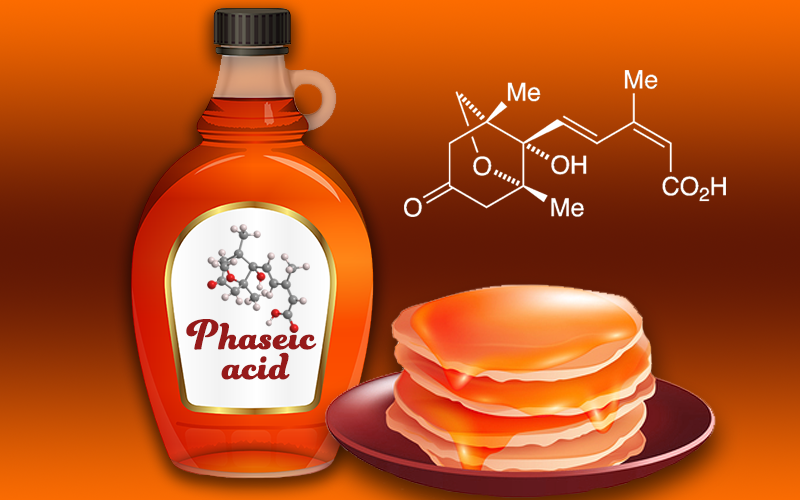What molecule am I?

Phaseic acid is a plant hormone and an oxidation metabolite of past Molecule of the Week abscisic acid. Like its precursor, it is an isoprenoid; both are products of a long series of biosynthetic steps that originates from β-carotene, another MOTW entry.
Abscisic and phaseic acids promote leaf abscission in most deciduous trees and shrubs. Among these, of course, is the sugar maple (Acer saccharum) native to north-central and northeastern United States and eastern Canada.
The sap and subsequent maple syrup produced by A. saccharum are rich in the two acids. Some authors have touted health benefits of the syrup that they attribute to phaseic acid in particular. Among these are the reduction of chronic diseases and the promotion of glucose uptake by the muscles, which may help diabetics specifically.
But phaseic acid may be more important to plants than to humans. Two years ago, researchers at the Salk Institute (La Jolla, CA) discovered that the hormone may provide drought resistance and other survival attributes to crops. It potentially can be a clue to developing more robust plant strains.
The dangers of phaseic acid have not been evaluated, but its precursor abscisic acid is not considered to be a hazardous substance. So today you can salute phaseic acid by celebrating National Maple Syrup Day (#MapleSyrupDay).
Phaseic acid fast facts
| CAS Reg. No. | 24394-14-7 |
| Empirical formula | C15H20O5 |
| Molar mass | 280.32 |
| Appearance | Colorless crystals |
| Melting point | 207–209 ºC |
| Water solubility | ≈70 mg/L (est.) |

Learn more about this molecule from CAS, the most authoritative and comprehensive source for chemical information.
Molecule of the Week needs your suggestions!
If your favorite molecule is not in our archive, please send us a message. The molecule can be notable for its current or historical importance or for any quirky reason. Thank you!
Stay Ahead of the Chemistry Curve
Learn how ACS can help you stay ahead in the world of chemistry.

